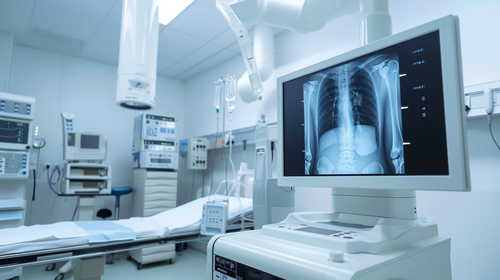Medical Diagnostics, the importance in using the right technology
Medical diagnostics have come a long way in recent years, thanks in part to the advancements in technology.
One of the key technological components that has made a significant impact on medical diagnostics is the use of high-resolution TFT displays, embedded technology, and medical approved power supplies.

Engineering Considerations for Future-Ready Medical Diagnostics:
As we integrate advanced components like TFT displays, embedded systems, and power solutions into diagnostic equipment, several factors need to be taken into consideration:
- TFT displays and controllers are crucial in medical diagnostics, providing the high-resolution and colour-accurate imaging necessary for precise and rapid diagnoses. These components enable the detailed visualisation of medical images, essential for detecting subtle anomalies and changes in tissues. The controllers ensure seamless compatibility and swift processing, translating digital signals into visual information without delay. This integration is vital across various medical devices, from portable diagnostic tools to advanced imaging systems, ensuring healthcare professionals have immediate access to critical diagnostic data. As technology evolves, advancements in TFT displays and controllers continue to push the limits of diagnostic accuracy and efficiency, enhancing patient care.
- Embedded systems have revolutionised medical diagnostics by integrating advanced computing capabilities directly into diagnostic devices, enhancing their functionality, efficiency, and reliability. These systems enable sophisticated data processing and analysis, crucial for accurate and timely diagnosis. For instance, embedded processors can rapidly analyse imaging data from MRI or CT scans, identifying patterns and anomalies with precision. They also facilitate real-time patient monitoring, processing vital signs data to detect critical changes instantly. Moreover, embedded systems contribute to the miniaturisation of diagnostic equipment, making devices more portable and accessible, thus extending the reach of advanced medical diagnostics to remote areas and improving patient care. By providing a foundation for integrating AI and machine learning algorithms, embedded systems further empower diagnostic devices to learn from vast datasets, improving diagnostic accuracy over time. In essence, embedded systems are at the heart of modern medical diagnostics, driving innovations that enhance patient outcomes and healthcare efficiency.
- Touchscreen firmware plays a pivotal role in modern medical diagnostic devices, ensuring that user interfaces are both intuitive and responsive. This technology allows healthcare professionals to interact directly with the device, navigating through menus, entering patient data, and adjusting settings with ease and precision. The firmware is designed to interpret touch inputs accurately and without delay, facilitating a seamless user experience even in the high-pressure environment of medical diagnostics. By enabling quick and efficient interaction, touchscreen firmware significantly enhances the usability of diagnostic equipment, allowing for faster patient throughput and reducing the potential for input errors. As diagnostic devices become more complex, the importance of sophisticated touchscreen firmware in maintaining straightforward, efficient operation cannot be overstated, directly impacting the effectiveness of patient care.
- Power Solutions: Especially critical for wearable and portable diagnostics, power systems must be reliable, safe, and designed for longevity, ensuring uninterrupted operation.
Integrating Advanced Components:
The integration of these advanced components requires a holistic approach, focusing on:
- System Integration: Ensuring that all components work in harmony, maintaining the integrity and reliability of diagnostic data.
- User Experience: Crafting interfaces that meet the specific needs of healthcare professionals, enhancing the usability of diagnostic tools.
- Regulatory Compliance: Adhering to stringent health and safety standards, which influence the selection of materials and technologies.
- Durability and Reliability: Components must withstand the demands of clinical environments, maintaining performance over time.
By addressing these considerations, design engineers are at the forefront of creating diagnostic equipment that not only meets the evolving needs of the healthcare industry but also significantly improves the quality and efficiency of patient care.
Contact us for more information on 01480 411600 to discuss your medical application





















